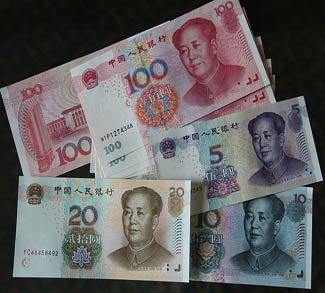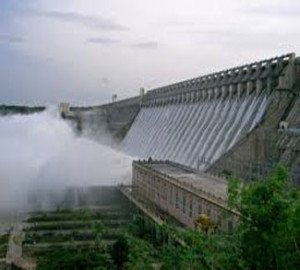“Chinese citizens welcome US President Barack Obama’s re-election, saying it would benefit bilateral relations,” reported China’s official news agency Xinhua in November.
Any Chinese optimism surrounding Obama’s victory was surely not a reflection of the President’s handling of Sino-American relations, but relief at the election of the lesser of two evils. Mitt Romney’s eagerness to make the “China threat” a key part of his campaign and vow to label Beijing a “currency manipulator” on his first day in office elicited a scornful response: “If scapegoating and vilifying China are merely campaign tricks… it is time for whoever the president-in-waiting is to tone down his tough rhetoric and adopt a more rational stance,” read a Xinhua editorial.
While Obama has yet to accuse China of manipulation, he has come close. In February 2010, with the renminbi exchange rate hovering around 6.8 to the dollar as it had since Obama’s inauguration, the President stated that the US needed “to make sure our goods are not artificially inflated in price and their goods are not artificially deflated in price.” Several months later a bipartisan group of senators introduced a bill that made it easier for the US to impose punitive trade barriers against Chinese goods.
An announcement by Beijing in June of that year that the renminbi would be given greater flexibility was met with scepticism. The International Monetary Fund subsequently urged the renminbi to be allowed strengthen and at the November 2010 G20 summit in South Korea, amidst sharp allegations from President Obama that the Chinese currency was “undervalued”.
Yet despite the grandstanding during the US Presidential campaign, Beijing has proven to be true to its word. In late November last year the renminbi touched 6.2105, its strongest level since China floated the currency in 1994; representing an 8.5% appreciation since Obama took office. Up until April 2012, the renminbi was mandated to trade within a daily range of 0.5% from a reference rate set by the People’s Bank of China (PBOC), but has since been free to move within a 1% band. Since the increase, the renminbi has reached the upper 1% limit on more than 100 trading days, which is evidence of a robust strengthening trend.
The ability to set the daily reference rate still leaves China’s authorities with ultimate control of their currency value, but they have allowed the renminbi to fluctuate uncharacteristically through 2012. Until July, the renminbi was 1.6% weaker versus the US dollar, before rallying to finish more than 1% stronger on the year. Disappointing Chinese economic data coupled with eurozone concerns saw renewed demand for the safe haven of the dollar through the first half of 2012, but a rebound in China’s exports and signs of stability in Europe spurred a reversal. Notably, the renminbi maintained a strengthening trend versus the euro throughout the year.
A stronger renminbi is in China’s interest. The nation’s five-year development plan set out for 2011-2015 puts an emphasis on boosting domestic consumption, which would mean a deviation from the reliance on export and investment-led growth. Official figures show that consumption as a percentage of gross domestic product (GDP) for China has been trending lower since 1980 and is just 35%, unusually low compared to approximately 70% for the US and 60% for Germany and Japan. However, over the first three quarters of 2012 consumption contributed more than investment; which also occurred in 2011 for the first time since 2001.
A stronger renminbi spurs domestic consumption by making imports cheaper, potentially driving Chinese companies to develop more innovative products which will spawn higher-paying jobs. Until recently, China kept its currency weak by issuing additional renminbi to purchase US dollars while also directing state-owned banks to give over a portion of their renminbi deposits at interest rates close to zero [following the 2008 financial crisis the portion was 20%]. Notably, from July 2008 to February 2012 the Chinese PBOC increased its foreign exchange reserves, composed primarily of the US dollar in the form of US government bonds, by nearly 80% to a record high of $3.31 trillion, a three-fold increase over the last six years.
The weak renminbi, a huge trade surplus and rising foreign investment were the primary drivers of this increase, but as the currency has strengthened, reserves have decreased to $3.29 trillion at the end of the third quarter of last year according to PBOC figures released in November. China’s US government debt holdings have also fallen recently, declining from a peak of $1.31 trillion in July 2011 to $1.15 trillion in September 2012. Even so, the drop in US debt was not put into context during the Presidential election campaign, with Mitt Romney stating in his nomination acceptance speech: “Does the America we want borrow a trillion dollars from China? No.”
The benefit for China of a stronger currency is not just improved domestic stability, but the enhancement of the nation’s international status. Undoubtedly, China’s long-term goal is to establish the renminbi as a reserve currency. Such a designation would see continuous demand for renminbi, enabling the Chinese government and its consumers to borrow at a lower cost. It also implies that all transactions could be carried out in renminbi, avoiding exchange rate risk and facilitating easier capital flows.
After the experience of the financial crisis, many investors would welcome an alternative reserve currency. The three rounds of quantitative easing employed by the US show a readiness to favour domestic policy ahead of global monetary and fiscal stability; that is their entitlement as occupants of the dominant international currency.
Efforts by Chinese authorities have seen the renminbi expand its global influence in recent years. In August an agreement was reached with Taiwan allowing banks there to clear renminbi transactions, making it the second major market after Hong Kong authorised to do so. London and Singapore are in contention to be additional offshore renminbi centers. Also last year, China quadrupled the quota which eligible institutions can invest in its stock market to 270bn renminbi ($43bn). In addition, the introduction of bilateral swap agreements with foreign banks permits Chinese firms to conduct direct overseas investments in renminbi, while also allowing foreign holders to make direct investment in China. In 2012 trade denominated in renminbi was an estimated $425 billion, an increase of more than 30% from the previous year.
However, while in terms of trade it is getting easier to transact in renminbi, converting the currency to liquid stores of value such as other currencies or precious metals remains complex. The rigidity of China’s domestic capital markets also makes it difficult for residents to invest overseas, with no foreign company listed on a Chinese stock exchange. To signify greater internationalization the renminbi must reach the stage in which unrelated parties transact in the currency and central banks accumulate sizeable and stable renminbi holdings to hedge against financial risk.
The Chinese Communist Party (CCP) is attempting to manage a balancing act between extending China’s influence and maintaining a stable economic platform, not to mention their own grip on power. If they do liberalise the capital account [difference between change in foreign ownership of domestic assets and change in domestic ownership of foreign assets], there is a real risk that wealthy Chinese nationals will move their assets abroad, creating a drain on China’s banking system. If domestic capital markets are opened up, China must allow interest rates to move freely so they can respond quickly to changes in the financial environment. Otherwise the low rates that have been artificially depressed to spur growth will not be sufficient to keep money in China that could otherwise take advantage of higher rates overseas.
The taming of inflation to an annualised 2.5% [it was 6.5% in August 2011] and annual economic growth of 7.8% for 2012 should see the renminbi strengthen in the near-term. Initiatives by the CCP are facilitating a more powerful currency, but its fate will ultimately be determined by market dynamics. The domination of the state’s asset holdings and absence of democracy will continue to keep investors wary of China. Based on the nation’s fundamentals, the international marketplace will decide the extent of business it wants to do with China and no amount of antagonistic rhetoric or retaliatory measures from the US can change that.




